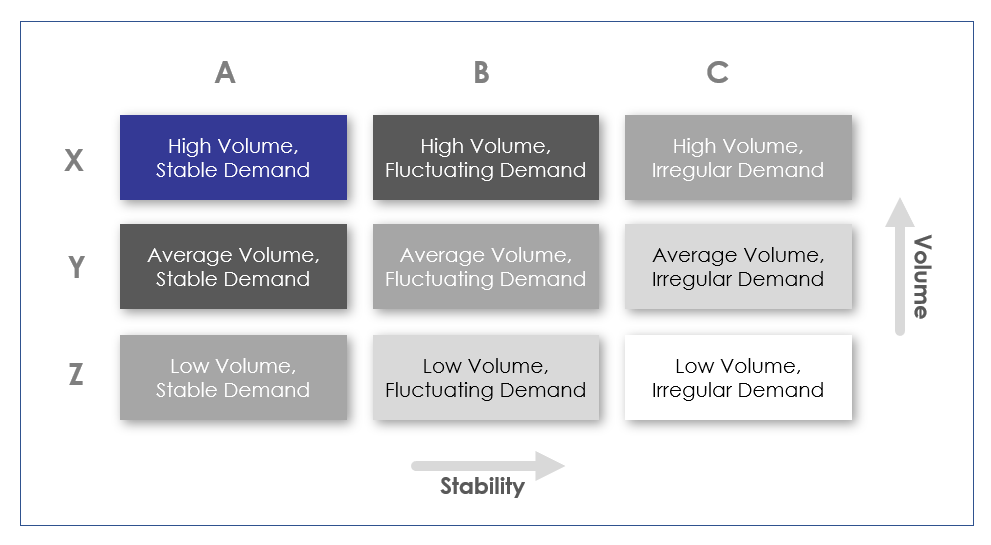- April 26, 2023
- Posted by: sadmin
- Categories: Customers

Poor inventory management often leads to out-of-stock situations for businesses that can be avoidable with proper tools and techniques. Product classification is a customizable and effective way to manage stocks by considering the properties of SKUs and their impact on sales. ABC-XYZ classification is one such technique that can be used by data scientists and businesses alike to understand product behavior, which along with other novel supply chain intelligence solutions, can majorly improve stock outs.
ABC-XYZ clustering can be broken into two independent methods:
- ABC Classification
In this approach, the cumulative percentage contribution of each SKU to the total sales are ranked. Generally, the 20% of the products contributing to 80% of the total revenue are classified as class A, 30% of the products with 15% sales contribution as class B, and the rest as class C. These values are customizable and depend heavily on the actual demand pattern of the business. - XYZ Classification
The variability of products is captured in this approach by ranking the variance and deviation of products. Class X is assigned to stable and consistent SKUs, whereas slightly volatile ones are in class Y and the most volatile are in class Z. This can give businesses and organizations a view of product predictability and can aid in accurate forecasting.

Based on the classifications, simple decisions like prioritizing the stock-keeping
of AX products over BZ can be easily taken.
Combining ABC-XYZ together can give an overall view of both, stock control as well as stock behavior. It can provide businesses of all sizes with a robust framework to understand demand of SKUs over drivers like seasonality, market movements and other economic influences and improve its demand and warehousing capabilities over time.
